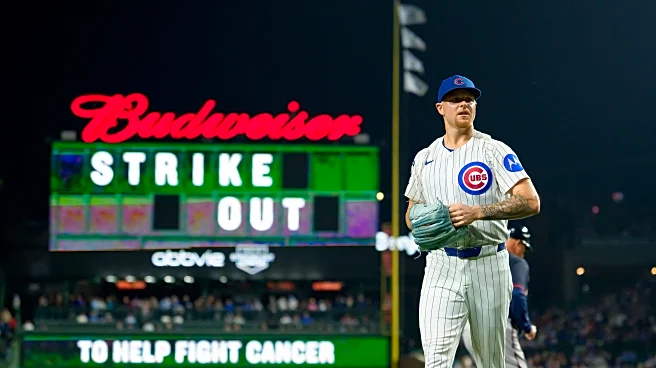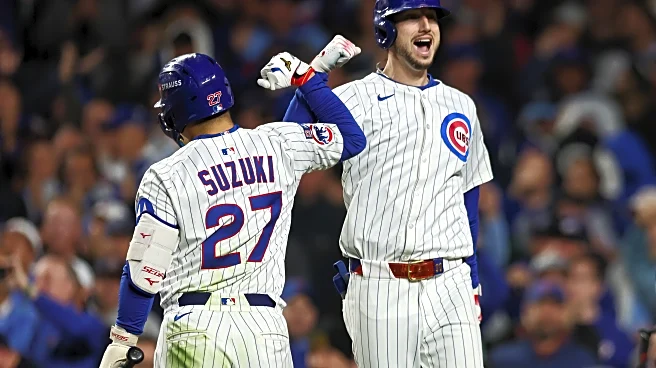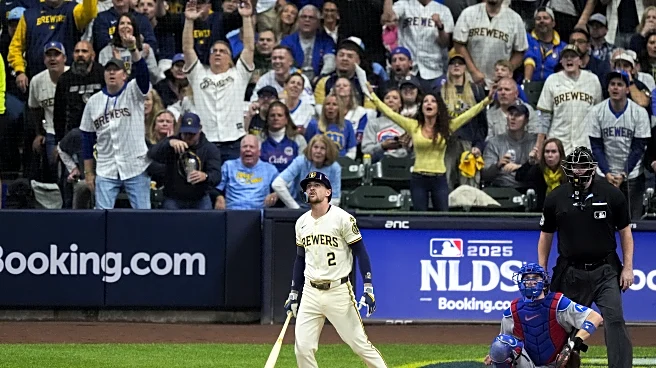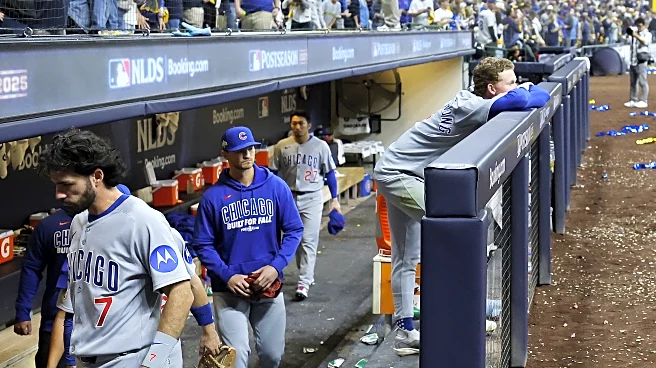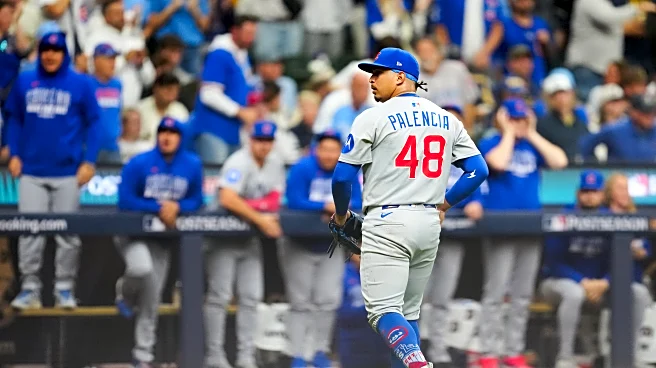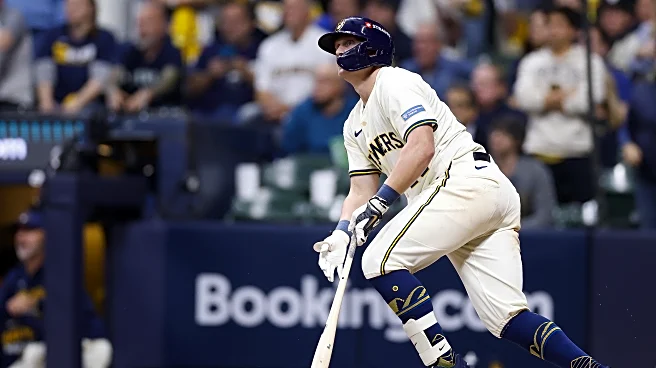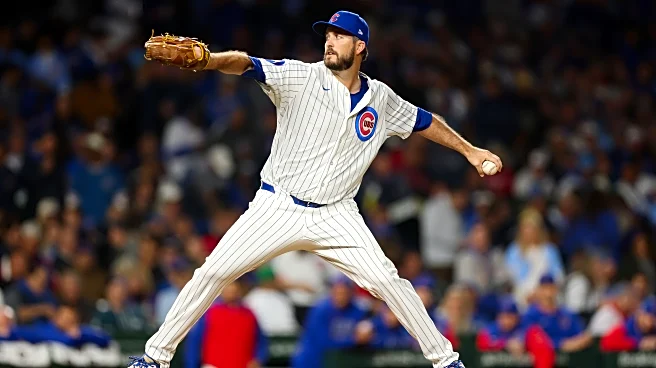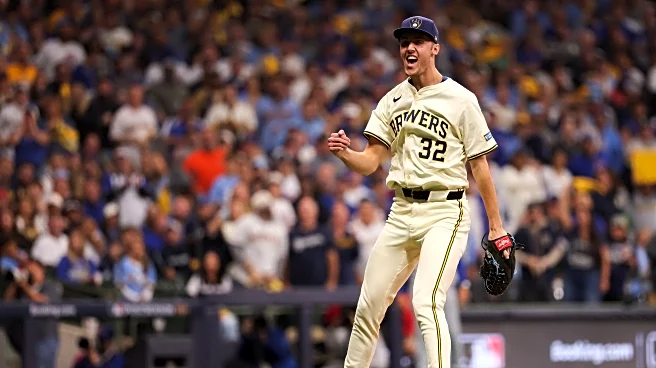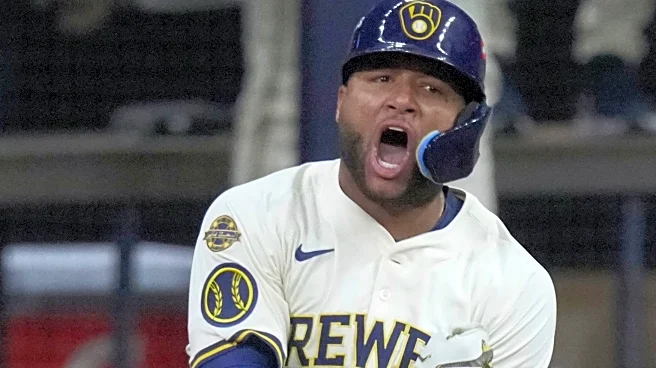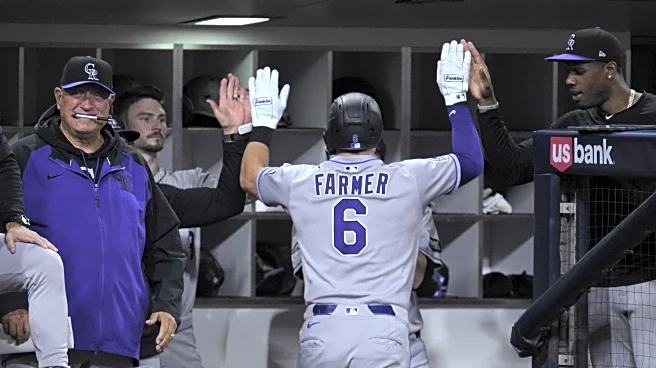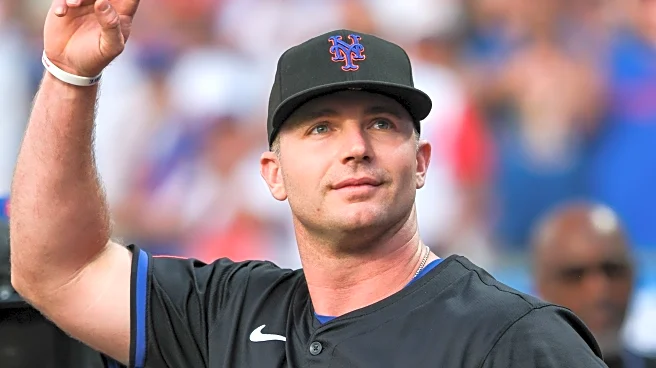The Cubs had quite a bit of success from the pitching staff in 2025. There were some breakout performances, some guys who had been discarded from other teams did well, and there seems to be pretty good
hope for the future.
As was the case in my companion piece about position players, these grades are my personal opinions and as such, are highly subjective.
Matthew Boyd: B
I gave Boyd an A+ in my midseason grades article, and he certainly earned that, making his first All-Star team.
His second half? Not so good, a 4.63 ERA and nine home runs allowed in 68 innings after the break in 12 starts.
Just when it appeared Boyd was totally gassed, he put together an outstanding outing in Game 4 of the Division Series against the Brewers, helping the Cubs force the decisive Game 5.
Here, Boyd talks about Game 4 and how much he loves Wrigley and Cubs fans [VIDEO].
Cade Horton: A
The Cubs’ No. 1 pick in the 2022 Draft had not pitched even close to a full season as a pro due to several injuries.
Then he stepped up when the Cubs needed him most. In 12 starts after the All-Star break, Horton posted a 1.03 ERA and 0.783 WHIP and was dominating his starts… until he suffered a rib injury just before (or during) his final outing of the season, which he left after three innings.
The team hoped he would be available for the NLCS, but, well, you know. A healthy Horton against the Brewers might have made for a different result in the Division Series.
Horton turned 24 in August and I’d expect him to be one of the top starters in MLB in 2026.
Shōta Imanaga: C
Imanaga had another good first half, though it was interrupted by a hamstring injury suffered in Milwaukee in May. He came back from that and threw well before the All-Star Game and through one start after (five outings, 1.78 ERA) but then a horrid outing vs. the White Sox (seven runs, three HR in five innings) started an awful run. Including that game through season’s end: 12 starts, 5.17 ERA, 20 home runs in 69.2 innings, yikes, that’s just awful.
Imanaga has talent, and I believe the right approach to fix things and be productive going forward. The Cubs and Imanaga have a complex set of contract options that will have to be sorted out before 2026.
Jameson Taillon: B
Taillon had an awful first start of 2026, allowing nine hits and six runs in 4.1 innings to the Diamondbacks March 28.
After that: 22 starts, 3.38 ERA, a 4.4 percent walk rate. In those 22 starts he allowed two or fewer runs 17 times. He did serve up too many home runs (24 overall) and missed some time with a pair of injuries. But all told, this was a good year for Jamo.
Colin Rea: B
You might think that grade is a bit high, but Rea stepped in when injuries to the rotation needed a solid inning-eater and he did that j0b exceptionally well.
Especially notable was his seven-inning, one-run outing vs. the Reds Sept. 18, when he struck out 11, a career high and season-best for any Cubs pitcher.
Here are those 11 K’s [VIDEO].
The Cubs have a club option for $6 million for Rea for 2026 that they will almost certainly exercise.
Ben Brown: D
Brown can dominate hitters when he’s on: six one-hit innings with nine strikeouts vs. the Reds May 31, for example.
Too often, though, he’d get lit up and serve up home runs (18 total in 106.1 innings). Brown allowed at least five runs in seven of his 25 games and that’s way too many.
He really needs to develop a third pitch or he’s going to wind up in the bullpen, which might not be a bad idea as he can dial things up to 98 miles per hour.
 Baseball Savant" />
Baseball Savant" />
Work on that changeup more often and make it effective, and maybe develop a slider or sweeper — then Brown could be a solid MLB starter.
Justin Steele: Incomplete
Steele, as you know, had UCL surgery in April and missed most of the year, making only four starts.
He’s supposed to start a throwing program this month. Having him back for Opening Day is probably a bit too optimistic, but I wouldn’t be surprised to see him back by early June. That would be a huge boost.
Javier Assad: B
Assad is who he is — a midrange inning-eater. His 3.65 ERA in eight games (seven starts) was within range of his three previous MLB seasons. If the Cubs can upgrade the top of the rotation — or get a healthy Steele back — Assad is a perfectly cromulent fifth starter or swingman.
Daniel Palencia: B
Palencia rose to the occasion when given the closer role in mid-May. From that game through Sept. 6, Palencia recorded 22 saves in 24 opportunities and posted a 2.50 ERA, with 44 strikeouts in 36 innings and a 6.1 percent walk rate. He allowed just two home runs in that 31-game span.
Then it all blew up Sept. 7 against the Nationals, when Palencia served up a pair of home runs in a disastrous five-run outing without recording an out. He left the game with a shoulder issue.
Palencia returned to make a pair of scoreless relief appearances the final week of the regular season and allowed three runs in six postseason outings covering 7.2 innings. More to the point, in those eight total games covering 9.1 total innings after his return, Palencia struck out only five of 34 batters faced. His velocity seemed down a tick or two after he came back, hinting he wasn’t 100 percent.
Hopefully a winter’s rest will help him get back to the guy who threw 101-102 consistently and he can resume the closer role.
A memorable moment for Palencia came June 26 in St. Louis, when he hit Willson Contreras and then benches cleared after the final out [VIDEO].
Brad Keller: A
Keller was a revelation. A failed starter who even the 121-loss White Sox didn’t want in 2024, the Cubs turned Keller into a leverage reliever who took over closing games when Palencia was injured.
Apart from two meltdowns (four runs April 22 to the Dodgers in a game the Cubs won anyway and five runs to the Cardinals July 5), Keller gave up only nine other runs the entire season and at one point had 22 consecutive outings without allowing a run.
Keller, who turned 30 in July, was a bargain at $1.5 million. He’s a free agent and it will cost the Cubs to keep him. They should do it.
Caleb Thielbar: A-
Did everything he was asked and didn’t really have any awful outings.
Thing is, he’s 38. He’s a free agent and the Cubs got him off the scrap heap. In this case I suspect they are likely to thank him for 2025 and look on the scrap heap again for a similar guy.
Drew Pomeranz: A-
Ditto Pomeranz, a similar scrap-heap find, even a bit more scrappy as he had not pitched in MLB in four (!) years when the Cubs got him after he had been released by the Mariners.
Pomeranz is almost two years younger than Thielbar. If the Cubs wanted to try one more year with him I wouldn’t be against that.
Andrew Kittredge: A-
Acquired in trade from the Orioles, Kittredge did a fine job shoring up a bullpen that needed help for the last couple of months of the season.
He had one awful inning against the Reds Aug. 5 (four runs while recording only one out). Apart from that his Cubs ERA was 1.69 in his other 22 appearances.
Kittredge has a $9 million team option for 2026 that the Cubs could exercise; that’s what he made in 2025. Or they could pay a $1 million buyout and try to negotiate a different deal with the right-hander who turns 36 in March.
Taylor Rogers: D
Acquired by trade at the deadline, he’s a pending free agent who was pretty bad in 17 games for the Cubs (5.09 ERA, four home runs in 17.2 innings). He turns 35 in December and though the Cubs could always use another left-hander, I doubt he’ll be back.
Michael Soroka: Incomplete
Soroka was injured in his first game with the Cubs [VIDEO].
With his injury history I didn’t think he’d be back, but he threw in five more games for the Cubs during the regular season and then twice in the postseason.
He is only 28, though has been around forever (debuted with the Braves in 2018). He’s also a free agent. I don’t think the Cubs need to bring him back.
Aaron Civale: B
Civale threw well in five relief outings after the Cubs acquired him Aug. 31, then ate up a bunch of innings in the blowout Game 1 Division Series loss to the Brewers.
His career history shows a couple of decent years and several that weren’t. Another free agent, Civale turns 31 next June. There will be younger guys similar to this available on the open market. I don’t see the Cubs needing him in 2026.
Porter Hodge: C-
Apart from one horrific outing against the Diamondbacks in that crazy April 18 game that the Cubs won anyway, Hodge threw reasonably well early in the season, but also spent quite a bit of time on the IL with oblique and shoulder issues. Basically, a lost season for him. He’ll be 25 in February. If healthy I think he could be a key part of the 2026 bullpen. He’s a guy who could really make a difference next year if he recovers his 2024 form.
Jordan Wicks: Incomplete
Wicks was the Cubs’ No. 1 pick out of Kansas State in 2021 and his debut late in 2023 as a starter looked promising. Since then there’s been a jumble of injuries and bad pitching.
He just turned 26 in September. Seems to me there could still be a future for him with this team — perhaps as a Thielbar-type reliever?
Luke Little: Incomplete
The 6-8 lefty is maddening. You can see he has talent, but he just walks too many guys — 28 total walks in 35.1 MLB innings and 154 batters faced. That’s an 18.1 percent walk rate, which, yikes. His minor league walk rate isn’t much better.
But yeah, talent, etc. If the Cubs can ever get him to throw strikes more consistently, he could be a useful reliever. He’s still just 25.
The following pitchers also appeared in at least one game for the Cubs this year: Ryan Brasier, Génesis Cabrera, Tom Cosgrove, Chris Flexen, Michael Fulmer, Gavin Hollowell, Brooks Kriske, Julian Merryweather, Eli Morgan, Nate Pearson, Ryan Pressly and Ethan Roberts.
